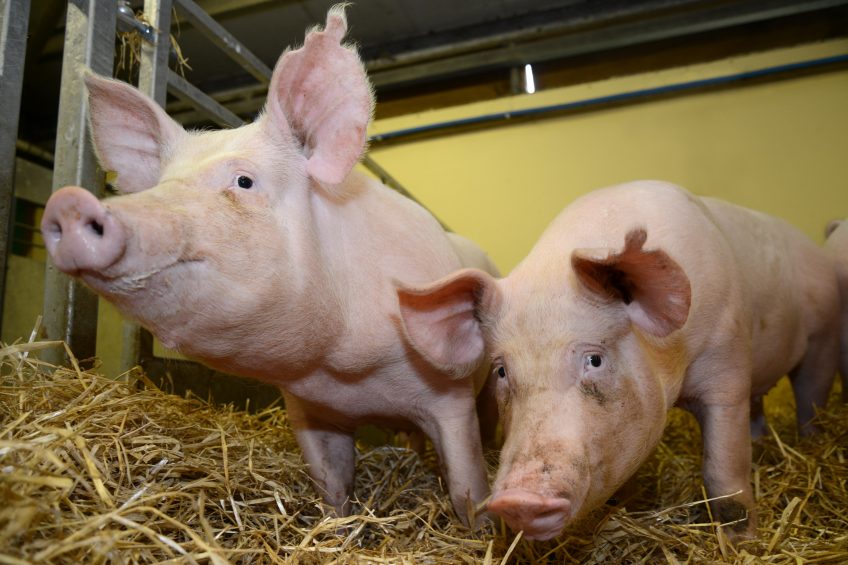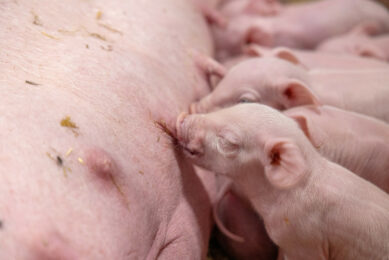Gene editing ruling harms EU pig breeding

After postponing several times, the European Court of Justice decided last July that the gene editing technique CRISPR should be seen and treated as genetic modification. This decision will seriously impact further developments and implementation of CRISPR in genetic programmes. What will it mean for the international genetic programmes in pig genetics?
Even though it will be impossible to distinguish any individuals created by CRISPR-technique or their offspring from naturally occurring individuals the court feels that they should be treated as genetically modified. Because of this they will be treated like genetically modified organisms (GMO) in Europe, where GMO currently are under much more strict regulations than in America or Asia. Similar techniques like mutagenesis, where genes are altered through radiation or specific chemicals are not treated as GMO and do not need to comply with the strict regulations, like special precautions, traceability and risk assessment.
CRISPR – what is it again?
Gene editing using CRISPR techniques has received enormous attention. It proves to be a revolutionary approach that provides solutions for better understanding the expression of certain genes to curing diseases at the embryonic stage. The technique mentioned is Clustered Regularly Interspaced Short Palindromic Repeats, currently mostly abbreviated and known as CRISPR. It was discovered in 2012 by Emmanuelle Charpentier and Jennifer Doudna. Since that time, excitement has been growing and its prominent key discoverers have been recently mentioned several times as potential Nobel Prize nominees.
Basically, CRISPR is a technique of precise cutting of DNA and gluing naturally occurring genes at the spot. In fact this technique will, through knocking out or replacing undesired genes, create new organisms that are like any other naturally occurring individuals. Individuals created with CRISPR are not considered Genetically Modified Organisms (GMO) and more importantly they can be impossibly distinguished from natural individuals. That is similar to it being impossible to tell the difference between a naturally occurring identical twins and twins originating from a set of cloned embryos.
Creating disease-resistant animals
CRISPR can be an important technique in creating disease-resistant animals. Most disease resistance genes, when discovered, have a rather low frequency in the most used breeds or crosses in the market. With CRISPR they can be effectively brought into the top animals of the current breeding pyramids. What could take generations of genetic selection can now be cut short to a few generations. Recently, a team of American, Chinese and Korean researchers successfully cured a human embryo of a genetic disorder called hypertrophic cardiomyopathy. Altogether signs of a revolutionary new technique that can cure and prevent diseases and will potentially generate a better understanding of genes both in crops and animals.
Nevertheless, the European Court has tagged this technique as GMO, which will block its further development and use in Europe.
International pig breeding
International pig breeding is based on 2 pillars; superior genetics and a superior health status. All main pig breeding companies have their nucleus herds in high health countries, where they operate at remote locations where they can maintain their health status. In most cases they breed Specific Pathogen Free (SPF) breeding pigs and the three main diseases focused on are Porcine Reproductive and Respiratory Syndrome (PRRS), Mycoplasma hyopneumoniae (M. hyo) and Actinobacillus pleuropneumonia (App).
Having a pig herd free of these 3 main diseases means a considerable saving of money on antibiotics every year. Being free of these diseases, opens the only way to reduce antibiotics considerably. Newly built pig farms are always populated with SPF breeding pigs in production countries with a low pig density. Closed herd breeding programmes were introduced to help pig farmers to maintain their health status and keep up with genetic improvement without having their health status continuously challenged by bringing in new breeding pigs.

Practical examples involving CRISPR
For 2 of the 3 above mentioned diseases, gene editing seems to provide opportunities for resistance genes. At the last International Pig Veterinary Society (IPVS) Congress held in June 2018, examples of disease resistance genes for both PRRS and App were presented. The gene ‘CD163’ is related to resistance to PRRS. A group at the University of Edinburgh, led by Dr Christine Burkard managed to edit the gene, tackling the specific SRCR5-domain of the gene, without losing its biological functions. At the end, by precision engineering through CRISPR, they managed to create pigs with macrophages lacking the CD163 SRCR5-region proved to be fully resistant to both PRRSv-subtypes. In Germany a similar approach at the University of Hanover targeting App-disease resistance managed to reveal at least three promising gene candidates.
Gene editing makes things much easier than before. What took half a year before can be currently done in a few of weeks and the technique seems much more accurate than its predecessor techniques. Also in the last years, accuracy has significantly increased.
Bringing gene editing techniques like CRISPR under the same strict regulations as GMO in Europe, however, will slow down developments in genetics in Europe significantly. Most likely Asia and America will be much more open to this new technique. The challenge will then be how to trace back if a breeding animal has in some branches of its pedigree a history of gene editing. It will be most likely impossible to enforce the more strict regulations EU regulations for CRISPR.
Remote SPF nucleus farms
Genetic companies get their genetic improvement from large worldwide lines that are bred at remote SPF nucleus farms. Because of this international gene exchange between top nucleus farms across continents is the base for successful genetic improvement in breeding lines. If due to strict regulations Europe does not allow gene edited lines and the rest of the world does, this requires the worldwide breeding lines to split up. The European breeding programmes will then be smaller and the programme will most likely not be able to keep up with the rest of a global programme. If the rest of the world effectively develops pigs that are more resistant to the main diseases, it means that Europe will be losing efficiency and won’t be able to keep up in the race of using fewer antibiotics.
The desire to keep things as natural as possible in Europe leaves limited room for an effective animal production with a reduced number of antibiotics. This seems a little bit contradictory. The European Court’s decision, however, can slow down the developments in the European pig industry dramatically. Within two breeding generations, using or not using gene editing techniques will make an enormous difference. Letting the European pig industry compete with non-gene edited pigs against the rest of the world having gene-edited disease resistant pig against the most important diseases will be impossible. In that case, Europe will no longer be able to play an important role in worldwide meat trading.
Embracing in the rest of the world
At the same moment, it is expected that gene editing will be embraced in some parts of the world and will decrease the necessity of further developing GMO pigs. The potential of gene-editing will be enormous and exploiting natural genetic variation in a species will get a boost. Improved designer pigs will be within reach using a technique that gains accuracy and has enormous potential.
The European Court decision is not very likely to be repeated in other continents. Consumers are still puzzled about what a certain technique really means, but it is very likely that the CRISPR techniques will slowly gain consumer confidence. That might be through success in battling genetic disorders in humans or through managing effectively a reduction in antibiotic use in pig production.
What will be the impact on genetic programmes and pig production worldwide? Genetic companies might have to split up their worldwide breeding populations in gene-edited and non-gene-edited lines. In case Europe is the exception main nucleus farms will move to high health countries with exporting opportunities. Canada and USA will be logical candidates. Apart from specific improvements through gene editing also the general genetic improvement will slow down in separate smaller breeding populations that cannot remain connected.
If breeding for disease resistance proves successful, then this can effectively bring down antibiotic use. A strictly regulated European population will maintain higher mortality losses and higher antibiotic use.
Most probably after some decades the known impact and the pressure for acceptance in crop science and pharmaceutical developments might change the way Europeans look at gene editing again.










